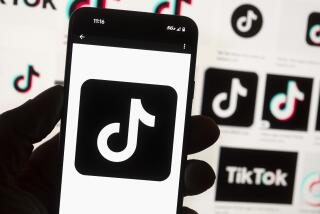Toyota adds some pizazz to its typically plain-vanilla Corolla
- Share via
What do you do with a car that is approaching sales of 40 million globally since its introduction 47 years ago?
Don’t mess it up, and don’t forget the competition.
That sums up the challenge for Toyota in launching the 11th generation of its workhorse Corolla sedan, the economy-car equivalent to Ford’s Model T.
The latest Corolla, a complete redesign, was unveiled at a Toyota news conference in Santa Monica on Thursday. The new Corolla, to hit dealerships this fall, boasts more aggressive styling, more room and more standard features, including higher-grade interior materials, Bluetooth connectivity and LED lights typical of more expensive cars.
The overhaul speaks to Toyota’s recognition that it can no longer top the sales charts in the hyper-competitive small car segment by just popping out another vanilla Corolla. As part of a larger corporate movement, Toyota has sought to inject an athleticism into the car, in both looks and driving dynamics, that will stir consumer emotions.
That will be needed to match recently redesigned compacts from Hyundai, Ford, Honda and Chevrolet.
“Toyota is making an effort to be stronger in exterior and interior styling,” said Jack Nerad, an analyst at auto information company Kelley Blue Book. “The quality and reliability advantage that they have enjoyed over other brands is not as strong as it has been, because others have caught up so they have to do more to differentiate their car.”
Although the current Corolla is the top seller in the compact car market so far this year, that’s mainly because it is a value play. More than 1 in 5 sales are being generated by rental car companies and other fleet buyers looking for cheap wheels.
“The quality was good, but it wasn’t pleasant to drive and it wasn’t pleasant to look at,” said Dave Sullivan, manager of product analysis for automotive consulting firm AutoPacific Inc.
The 2013 model’s average sales price is just $16,660, according to industry data, well below the $19,800 of the Honda Civic, its closest rival and the bestseller among compact cars when fleet sales are excluded from the calculation. Rival automakers say it sells well because it is the budget play in the category.
Compact cars make up about 15% of auto sales, the second-biggest segment after the 17% share held by larger family sedans, according to Kelley Blue Book.
Toyota believes the new Corolla will top sales of 300,000 in the U.S. annually, and bring in more money and more retail business, said Bill Fay, group vice president and general manager of the Toyota brand’s U.S. sales arm.
“Consumers are coming in looking for more content in smaller cars,” Fay said. “They want convenience, safety, technology and value. We want to broaden the appeal of the car.”
Compacts were once derided as “penalty boxes” for their spartan interiors and scant features, Nerad said.
“They used to be entry-level cars, and you would get out of it just as soon as you could afford to,” he said.
Toyota will still offer a stripped-down Corolla, a “base” model with either a six-speed manual transmission or a basic four-speed automatic. Higher trim levels will get a more fuel-efficient continuously variable transmission, or CVT.
This is the first Toyota sold in the U.S. with the CVT transmission, a type of gearbox that’s seeing increasing use in sedans such as the Nissan Sentra and Honda Accord.
The car will be offered in four grades that cover a broad spectrum of prices and option packages, Fay said. “To sell the volume equal to our expectations,” he said, “you need a breadth of product offerings.”
All will have better fuel economy than the current model’s 29 miles per gallon in combined city and highway driving, Toyota said, although it declined to give specific numbers until testing is complete. Toyota did say a special “eco” version will top 40 mpg in highway driving.
All but the Eco model will share a 1.8-liter, four-cylinder engine that produces 132 horsepower, a holdover from the current model.
Toyota has not released pricing details.
After its younger and larger sister, the Camry, the Corolla is Toyota’s second-bestselling vehicle in the U.S. and is part of the “core” of the franchise here, Fay said.
“There is so much equity in the Corolla name,” AutoPacific’s Sullivan said. “Corolla and Camry are like ketchup and mustard.”
He said the car also represents the cornerstone of Toyota’s sales efforts in the U.S. by being the entry point for the Toyota brand for many buyers who will later buy Camrys and other higher-end Toyotas.
The Corolla also is a crucial car for the Japanese automaker internationally.
“It was one of the initial products in many of our markets and has really set up how people perceive Toyota worldwide,” Fay said.
Toyota sold nearly 1.2 million Corolla’s worldwide last year, including sedans, wagon and liftbacks, some of which are not available in the U.S. The European versions will go on sale Friday.
The Corolla first went on sale in the U.S. in 1968, and as gas prices rose during the 1970s, the fuel-efficient sedan gave U.S. automakers fits. Rivals such as the Ford Pinto and the Chevrolet Vega didn’t get the same fuel economy, didn’t drive as well and were far less reliable.
“The Corolla established the formula for Japanese vehicles in the United States,” said Leslie Kendall, curator of the Petersen Automotive Museum. “They were unexpectedly competent and reliable at a time when the only thing the Big Three U.S. automakers knew how to do was to make big cars.”
More to Read
Inside the business of entertainment
The Wide Shot brings you news, analysis and insights on everything from streaming wars to production — and what it all means for the future.
You may occasionally receive promotional content from the Los Angeles Times.









